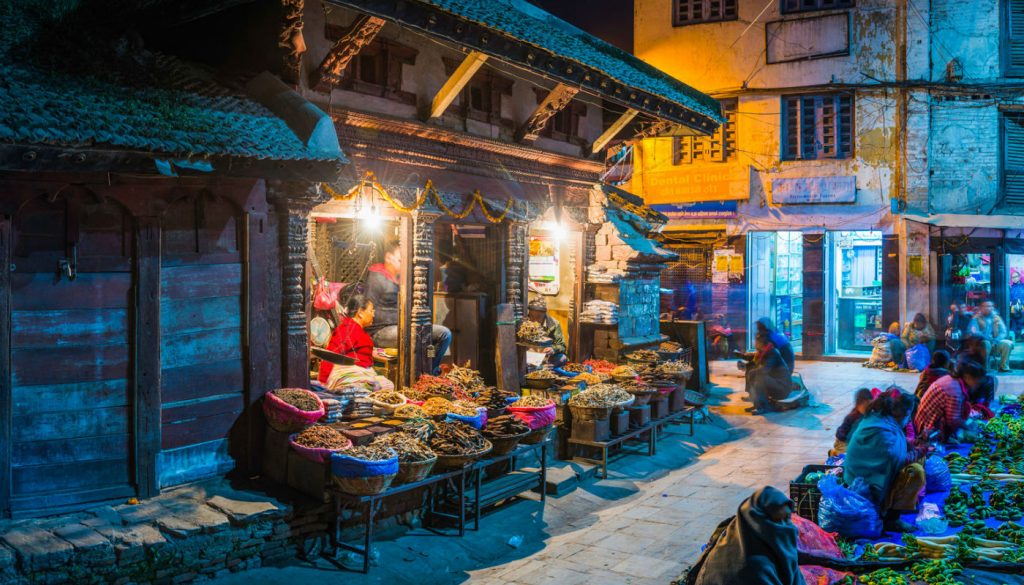Most of us take energy access for granted, but life without electricity is standard for many people around the world. It’s not just light or heat they miss out on – it’s opportunities for security, economic growth, environmental sustainability and more.
What did you do when you got up this morning? You probably squinted at your phone while unplugging it from the charger, turned on the lights and made some breakfast using electricity-powered appliances.
This simple morning routine is something we take for granted, but life without electricity is commonplace for more than one billion of the world’s population. I experienced this contrast firsthand while spending two years travelling to and from rural Cambodia. I was in a constant transition between life with and without electricity.
Life in the dark … sort of
The evolution of sources of light, from candles to gas and kerosene lamps, to the icon of innovation – the light bulb – tells the story that people inherently do what they can with what they have.
The price of light also tells a fascinating story. When you consider the return on investment for those different light sources, it has fallen by a factor of 500,000, according to Tim Harford. Electricity provides much more heat and light for much less investment compared to wood or candles.
Light bulbs are so ubiquitous in the developed world that we don’t give much thought to the work involved in accessing energy beyond flicking a switch. Man-made light was once too precious to use, but is now too cheap to notice, Harford concluded.
However, household’s throughout the developing world still burn kerosene or candles for lighting and use dry cell batteries to power appliances. The poor and those without modern energy access are often the same. More than 200 million people (15 per cent of the total population in developing countries) live in energy poverty, meaning they spend more than 10 per cent of their income on energy access. Their energy sources are often low quality, expensive and dangerous.
In comparison, households in Australia spend on average 2.9 per cent of their budget on energy (electricity and gas), and energy sources are only occasionally unreliable.
There is (high-quality) light at the end of the tunnel
The declining costs of renewables, efficient appliances and innovative business models mean there is large potential for renewable energy to provide affordable, reliable and clean energy access to off-grid areas.
Access to affordable, reliable, sustainable and modern energy for all by 2030 is number 7 of the United Nations Sustainable Development Goals (SDGs). Energy access is the “golden thread” that intertwines economic growth, human development and environmental sustainability, and is at the heart of other SDGs including poverty reduction, climate sustainability, gender equality and improvements to health. The economic benefit of these changes might be hard to capture, but the effect on individual lives is easy to feel.
During my time in Cambodia doing humanitarian engineering projects, I experienced how reliable energy access not only changes day-to-day life but fundamentally transforms way of life.
Rather than half a dozen children huddled over a single book dimly lit by a kerosene lamp, an entire living room can be illuminated, allowing children to read and learn at all hours. In the community I lived in, English and maths classes began to be held at night using the solar lights we installed, which meant children who worked during the day no longer missed out on an education.
Access to electricity is a quintessential intermediate good, as it does not represent an end in itself; it is an input factor to a large set of activities (‘uses’) that can improve welfare, increase productivity, or generate income and help lift people out of poverty. The local corner store where I would buy crisps and soft drinks could stay open longer with lights. When I asked, the store owner said revenue had doubled from being able to stay open longer.
We installed solar home systems in households, which also changed the lives of families at a household level. At night, the stairwell and adjacent rice field were now well-lit, which increased safety for the elderly and young alike. Electricity also brought the arrival of television, and families would congregate in the evenings to watch boxing or the local news, increasing entertainment and the sharing of information.
The grid: build it properly or don’t build it at all
With energy access for all as one of the SDGs and the transition towards a sustainable energy system underway, the nature of the grid is increasingly important. Our experience in Australia highlights that the future grid should be conducive for renewables. So if we could start from scratch, what would the grid look like? Or would we build a grid at all?
My experiences in Cambodia demonstrate there is – and will continue to be – a trend towards decentralised energy solutions. From now through to 2030, renewable energy sources are predicted to power more than 60 per cent of new electricity access, and off-grid and mini-grid systems will provide the means for almost half of new access. These are underpinned by new business models using digital and mobile technologies that facilitate payment processes, thus enabling the solutions to achieve scale.
On-grid and decentralised solutions are complementary and will require sensible and stable planning that encourages investment. Sound familiar? Developing world or developed, we need policy certainty and a conducive investment environment to enable a transition to a more sustainable energy system.
